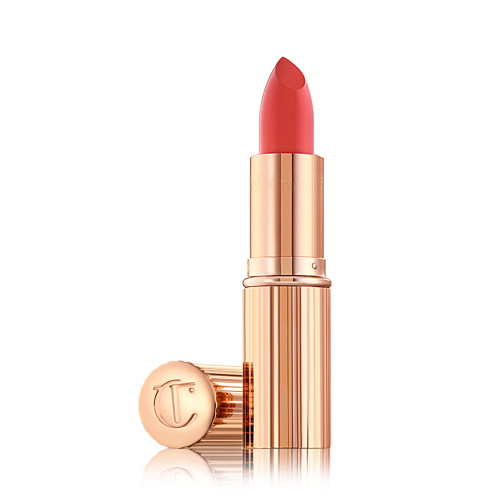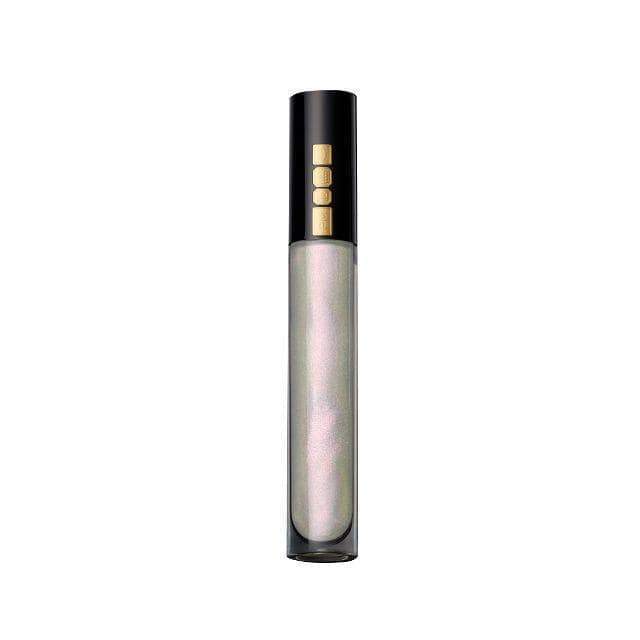A Makeup Artist and a Dentist Explain How To Use Lipstick To Make *Any* Teeth Look Whiter
Traditionally, the go-to advice for choosing a lip color to give the appearance of a whiter smile has focused on the color yellow. Typically, pros will tell you to look for a blue tone to counteract the yellow shades in your teeth. But while it's true that many people do have yellow tones in their teeth, understanding your specific undertone (as in, the shade beneath that yellow) can give you a more customized approach to your makeup—and ultimately give you smile-brightening results. Keep reading for what you need to know.
Understanding teeth undertones
There are four different undertones that characterize the color of your teeth: reddish-brownish, reddish-yellowish, greyish shades, and reddish-grey. It's not always obvious which category you fall into, so Sienna Palmer, DDS, a cosmetic dentist in Orange County, CA, recommends either asking your dentist or using an at-home shade matching kit, which are often included in at-home whitening kits (she's a fan of the “simple tooth shade reference guide that comes with the Opalescence At-Home Whitening Kit).
Once you've figured out which category your teeth fall into, you can use the information to help you choose a lipstick. “Always think: cancel or complement,” says Courtney Resch, owner of Ashen Salon in Jolla, CA, a makeup artist and color theory educator.
{{post.sponsorText}}
In many cases, this means you'll want to opt for a blue undertone. Blue hues are (almost) universally helpful in countering any yellowness across the board, thus providing a brighter, cooler aesthetic for your pearly whites. “Scarlet or berry lipstick with purple-blue undertones will balance out any staining on your teeth,” says Dr. Palmer. “The dark contrast makes your smile pop.” Pro tip? You can also top your chosen lipstick shade with a blue gloss, which will help to counteract staining.
Because three of the four color categories are a variation of "reddish," in these cases you'll want to look for something with a green tone to even things out (it's the same reason why green primers and concealers are used to mask redness in the skin: green balances red). But that doesn't mean you have to commit to wearing green lipstick for the rest of your days. “There’s a green value in the combination of hues that make up your final lipstick shade," says Resch. "Think: mauve and neutral beige tones.”
Generally, you'll want to avoid warm tones (with one exception, which we'll get to), because those shades can emphasize yellow. Dr. Palmer also warns against pearlescence (again, with one exception), which could have too much white in it, thus leaving your teeth looking duller.
How to pick a lipstick shade to make your teeth look whiter
For reddish-yellow undertones: berries and blues
Since you’re not going to want a blue-green lip color most days of the year (we suspect), you’ll want gloss or lipstick that has a certain amount of those colors in the mix. “You use purple-grey products [like toners and shampoo] on blonde hair to cancel yellow,” says Resch. “The same goes for lip color. There are a lot of blue undertone lipsticks, so you’ll have options!”
Lipstick shades to look for: Berry colors (purple, deep violets, blue-hued burgundies); Reds with blue undertones; Pinks, especially a blue-toned bright pink; Cool-toned mauves
Our pick:
For reddish-brown undertones: cool beiges, mauves, and opal
“Brown is all the colors together—this is a mixture of all the things,” says Resch. In this case, opalescence and pearlescence may actually work in your favor, which is likely not the case for the other three undertones. In the instance of reddish-brown, though, the glimmer may help to add brightness to the brown. Plus, because these teeth skew warmer thanks to their red tones, the blue and green shimmer in opal lipstick shades can help as well. Mauves also tend to have green in their mix, which can help contrast red as well. Dr. Palmer says to avoid warmer peachy and brown nudes, “Which bring out the reddish-brown undertones.”
Lipstick shades to look for: Pinks and violets; Cool beiges; Pinky nudes, dusty rose, and mauve; Anything with some opalescence (even a clear, shimmery gloss)
Our pick:
For reddish-grey undertones: cool and saturated colors
Since red is the chief color here, blue and green tones are helpful yet again. “Avoid red-red lips—but blue-reds and purpely-reds are good tones,” says Resch. As for countering the grey tones? “Saturate it and keep it bright,” she says. Avoid anything too “dusty” with a grey tone, as that will pull out more of the grey in your smile. “The brighter the better,” she adds.
Lipstick shades to look for: Bright blue-hued red or purple-hued red; Bright cool purples; Hot pinks
Our pick:
For grey undertones: Warm shades
If you have grey undertones, you’re in a unique position: this is the only time you'd want to use warm shades in your lipstick. “You don’t want to contrast these tones, you want to compliment them," says Resch. “You’ll want to use orangey reds to warm up the cooler, almost ashy tone of grey. Don’t put ash on ash—this means no cool tones." The same principle applies if your teeth are really white: The brighter and warmer, the better.
Lipstick shades to look for: Oranges and corals; Warm pinks; Warm reds
Our pick:
Oh hi! You look like someone who loves free workouts, discounts for cutting-edge wellness brands, and exclusive Well+Good content. Sign up for Well+, our online community of wellness insiders, and unlock your rewards instantly.
Loading More Posts...


